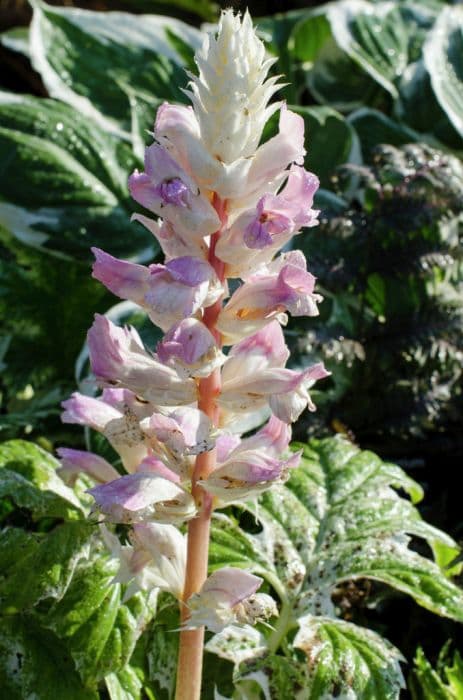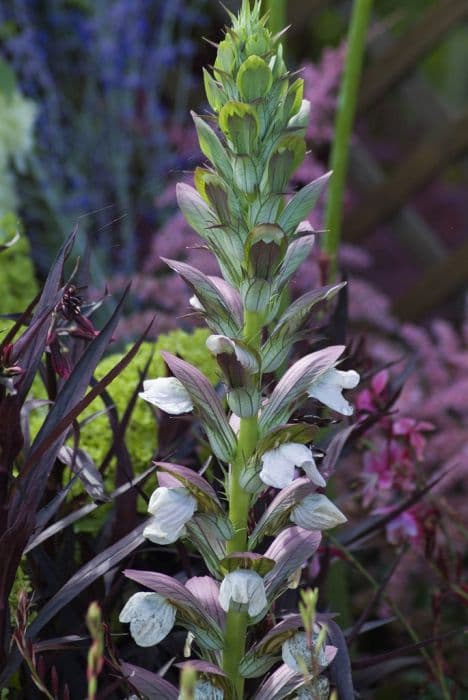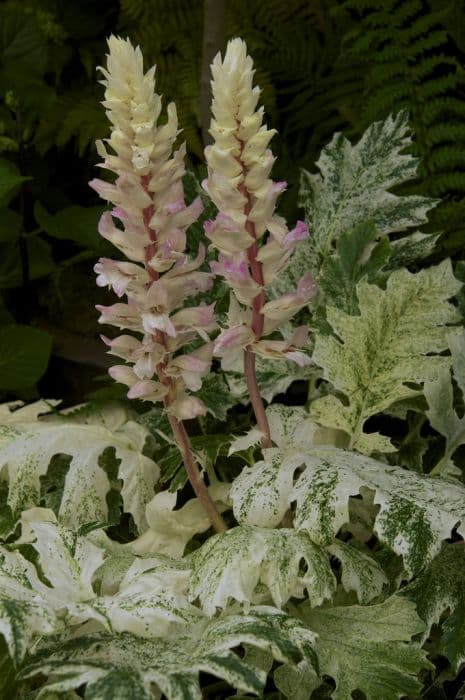Brazilian fuchsia Justicia floribunda

ABOUT
Justicia floribunda, commonly known as Brazilian fuchsia, is a visually striking plant notable for its lush green foliage and vibrant flower display. The plant produces elongated, lance-shaped leaves that are deep green in color and have a smooth texture. These leaves are arranged in an opposite fashion along the stems, providing a dense and bushy appearance. One of the most distinctive features of Brazilian fuchsia is its beautiful flowers. The blooms have a tubular shape, resembling small fuchsia flowers, and are typically a brilliant shade of pink or reddish-purple. These colorful flowers often emerge from the axils of the leaves, which is where the leaf stem attaches to the main stem. The large, showy bracts that encase the flowers can also be quite ornamental, presenting a contrast in texture and color to the petals they surround. The overall impression of Justicia floribunda when in full bloom is of a vibrant and colorful plant that can add a touch of exotic beauty to any garden or landscaped area. With its spectacular flowers and robust greenery, it can be a magnet for pollinators such as hummingbirds and bees, further enhancing its ornamental value. Its visual impact is characterized by the contrast between the lush foliage and the striking flowers, making Brazilian fuchsia a popular choice for tropical and subtropical gardens.
About this plant
 Names
NamesSynonyms
Van Houtte's Justicia, Brazilian Fuchsia, Flamingo Flower
Common names
Beloperone floribunda, Justicia fulvicoma, Justicia ghiesbreghtiana.
 Toxicity
ToxicityTo humans
Justicia floribunda, commonly known as the Brazilian plume flower, is not widely recognized for its toxicity to humans. There is limited information available about its potential poisonous effects, so it's advisable to err on the side of caution when dealing with this plant. If it were poisonous, symptoms could potentially include gastrointestinal distress such as nausea, vomiting, and diarrhea, as well as skin irritation if handled. As with any plant, individual allergic reactions could occur.
To pets
Justicia floribunda, also known as the Brazilian plume flower, is not categorized as a common toxic plant to pets. There is a lack of evidence to suggest significant toxicity in animals. However, as with any non-food plant, ingestion might cause mild to moderate gastrointestinal upset in pets, which could present as vomiting, diarrhea, or drooling. Pet owners should always be cautious and prevent pets from eating plants not meant for consumption.
 Characteristics
CharacteristicsLife cycle
Perennials
Foliage type
Evergreen
Color of leaves
Green
Flower color
Pink
Height
4 feet (1.22 meters)
Spread
2 feet (0.61 meters)
Plant type
Shrub
Hardiness zones
10
Native area
Mexico
Benefits
 General Benefits
General Benefits- Ornamental Value: Justicia floribunda, commonly known as Brazilian fuchsia, is often used in gardens and landscapes for its showy, tubular flowers that can add aesthetic value to the environment.
- Habitat for Wildlife: The plant can provide nectar for hummingbirds and butterflies, supporting biodiversity in the garden.
- Shade Tolerance: Brazilian fuchsia is known to tolerate lower light conditions, making it suitable for planting in a variety of garden locations.
- Drought Resistance: Once established, it may exhibit some level of drought resistance, reducing the need for frequent watering.
- Ease of Propagation: The plant can be easily propagated from cuttings, allowing gardeners to create more plants without additional cost.
- Quick Growth: Brazilian fuchsia tends to grow quickly, providing faster coverage or filling in garden spaces sooner than some other plants.
- Versatility in Landscaping: It can be used in mixed borders, as a stand-alone specimen or as part of a hedge.
- Seasonal Interest: With its blooming pattern, the plant can offer seasonal color and interest in the landscape.
 Medical Properties
Medical Properties- Anti-inflammatory: Justicia floribunda has been reported to have anti-inflammatory properties, which may help reduce inflammation in certain conditions.
- Analgesic: There is evidence to suggest that the plant may have pain-relieving properties.
- Antipyretic: The plant might be used to reduce fever, though scientific support and documentation for this use are limited.
- Antimicrobial: Some studies indicate that Justicia floribunda may possess antimicrobial activity against certain bacteria and fungi.
 Air-purifying Qualities
Air-purifying QualitiesThis plant is not specifically known for air purifying qualities.
 Other Uses
Other Uses- Justicia floribunda, known as Brazilian plume flower, can be used in butterfly gardens as it attracts a variety of butterflies and hummingbirds due to its bright flowers.
- The Brazilian plume flower is often used in traditional and folkloric art, inspiring patterns and designs in textiles and pottery with its vibrant inflorescences.
- It can serve as a natural dye, where the flowers of the Brazilian plume might be used to produce a range of pink to violet hues on fabrics.
- This plant is used as a privacy screen in subtropical landscapes because of its dense foliage and height, which can reach up to 5 feet.
- The long-lasting flowers of the Brazilian plume can be used in fresh flower arrangements, providing a tropical flair to bouquets.
- In garden water features, the Brazilian plume flower can provide a lush backdrop and enhance the visual appeal of ponds and fountains.
- Brazilian plume flowers can be used in education, particularly in botany and horticulture programs, to study plant growth habits and flower structures.
- It is occasionally used as a companion plant, as it can provide shade to smaller, more delicate plants in scorching climates.
- The Brazilian plume flower may be used in living fences or hedges, offering both aesthetic and practical boundary delineation in gardens.
- Photographers and artists often use the plant as a subject or backdrop due to its striking and colorful inflorescence, making it an excellent choice for art projects and workshops.
Interesting Facts
 Feng Shui
Feng ShuiThe Brazilian Plume Flower is not used in Feng Shui practice.
 Zodiac Sign Compitability
Zodiac Sign CompitabilityThe Brazilian Plume Flower is not used in astrology practice.
 Plant Symbolism
Plant Symbolism- Abundance: Justicia floribunda, also known as Brazilian Fuchsia, tends to produce numerous colorful flowers that symbolize abundance and generosity.
- Attractiveness: The vibrant blooms of Brazilian Fuchsia represent charm and a beautiful persona.
- Vibrancy: The lively appearance of the plant conveys energy and a vibrant life, symbolizing a spirited and enthusiastic nature.
- Joy: Due to its bright flowers, Brazilian Fuchsia is associated with joy and the ability to spread happiness to others.
- Celebration: The lush, ornamental aspect of the plant embodies celebration and the human tendency to seek joy in festivities and social gatherings.
 Water
WaterBrazilian Plume Flower prefers consistent moisture, so water it thoroughly when the top inch of soil feels dry to the touch. On average, this might be once a week, but it can vary depending on factors like temperature and humidity. During active growth in the spring and summer, it may require more frequent watering, such as twice a week, and less during the dormant winter period. Ensure each watering session soaks the soil to encourage deep root growth, using approximately half a gallon for a medium-sized pot. Monitor soil moisture regularly and reduce the amount of water during cooler, less active growth periods to minimize the risk of root rot.
 Light
LightBrazilian Plume Flower thrives in bright, indirect sunlight. It should be placed in a location where it receives dappled sunlight or bright shade, as direct sunlight can scorch the leaves. An east-facing window where the morning light is gentle, or a north-facing window that provides consistent filtered light throughout the day are ideal spots for this plant.
 Temperature
TemperatureBrazilian Plume Flower fares best in temperatures ranging from 60 to 85 degrees Fahrenheit. It should be protected from temperatures below 50 degrees Fahrenheit to prevent cold damage. The ideal temperature range for robust growth and flowering is between 70 and 80 degrees Fahrenheit, ensuring the plant is kept away from drafty areas and away from extremes of heat or cold.
 Pruning
PruningPrune Brazilian Plume Flower to maintain its shape, encourage bushier growth, and remove any dead or damaged stems. Pruning is best done in the late winter or early spring before new growth begins. Cut back the old flower stalks to just above a set of leaves to promote new flowering shoots. Pruning can be performed once a year or as needed to keep the plant looking tidy.
 Cleaning
CleaningAs needed
 Soil
SoilJusticia floribunda, commonly known as Brazilian plume flower, thrives best in rich, well-draining soil with a slightly acidic to neutral pH between 6.1 and 7.5. A mix of loam, peat, and sand in equal parts provides the ideal soil structure for this plant, ensuring proper drainage and nutrient retention.
 Repotting
RepottingBrazilian plume flower (Justicia floribunda) should be repotted every 2-3 years or when it becomes root-bound. Choose a pot that's one size larger than the current one to provide room for growth, typically in spring before the onset of the growing season.
 Humidity & Misting
Humidity & MistingBrazilian plume flower (Justicia floribunda) prefers high humidity levels, typically around 60-70%. This plant will benefit from regular misting or placement on a pebble tray with water to maintain the ideal humidity.
 Suitable locations
Suitable locationsIndoor
Place Brazilian plume flower in bright, indirect light; keep soil moist.
Outdoor
Plant in partial shade, shelter from strong winds, and keep soil moist.
Hardiness zone
9-11 USDA
 Life cycle
Life cycleJusticia floribunda, commonly known as Brazilian plume flower, begins its life as a seed, which germinates in warm, moist soil conditions to produce a small seedling. This seedling grows into a young plant, developing a root system and foliage through the vegetative growth stage. As the plant matures, it enters the flowering stage, where it produces vibrant, plume-like inflorescences that attract pollinators. After pollination, the flowers develop into small capsules containing seeds, which represents the reproductive stage. Once the seeds are dispersed, possibly by wind or animal activity, they can give rise to new plants, thereby continuing the life cycle. Throughout its life, the Brazilian plume flower requires consistent moisture and a warm climate to thrive and can be propagated through cuttings or division as well as by seeds.
 Propogation
PropogationPropogation time
Spring-Early Summer
The most popular method of propagation for Justicia floribunda, commonly known as Brazilian plume flower, is through stem cuttings. This process is typically done in the spring or early summer when the plant's growth is most vigorous. Gardeners should select a healthy, non-flowering stem and cut a segment around 4 to 6 inches (approximately 10 to 15 centimeters) long just below a leaf node. The lower leaves are then removed and the cutting can be dipped in rooting hormone to encourage root development. Afterwards, the stem cutting is placed in a moist potting mix or directly into soil with good drainage and kept in a warm environment with indirect light. Maintaining consistent moisture without overwatering is crucial until the cutting has rooted, which usually takes a few weeks. Once the new Justicia floribunda plants have established a robust root system, they can be transplanted to their final location.

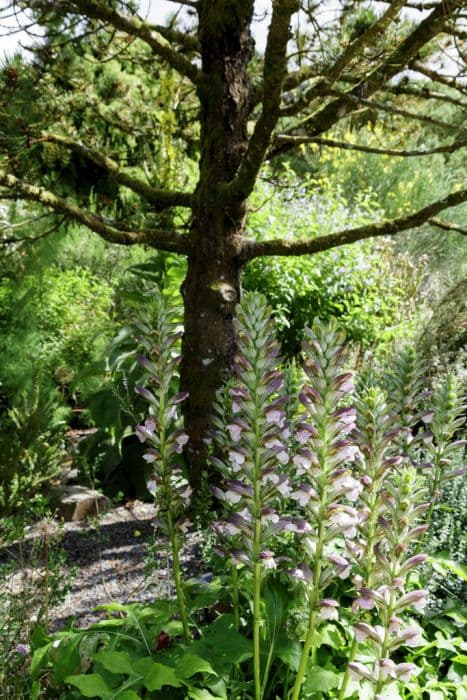
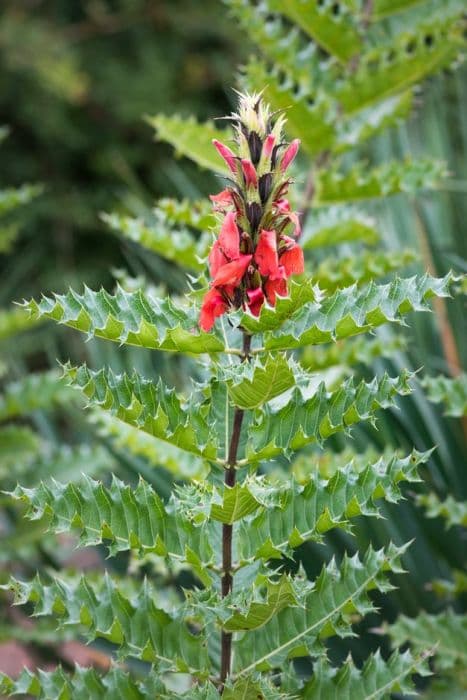
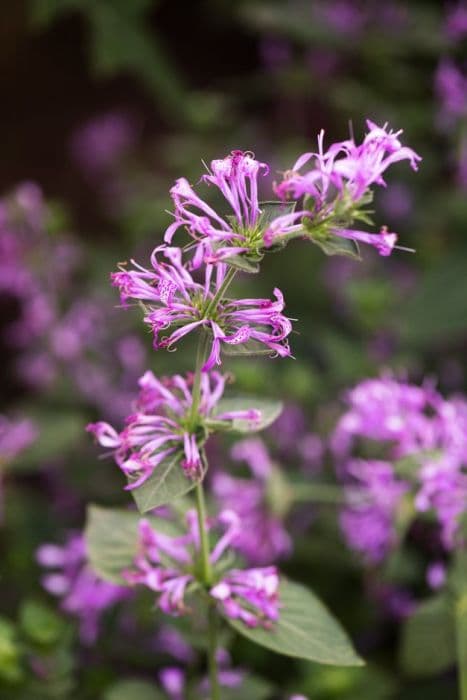
![Black-eyed Susan [Sunny Suzy Red-Orange]](/_next/image?url=https%3A%2F%2Fplants-admin.emdemapps.com%2Fimages%2Fplants%2F%2Fimages%2F607ea5891ee3f.jpg&w=640&q=75)

